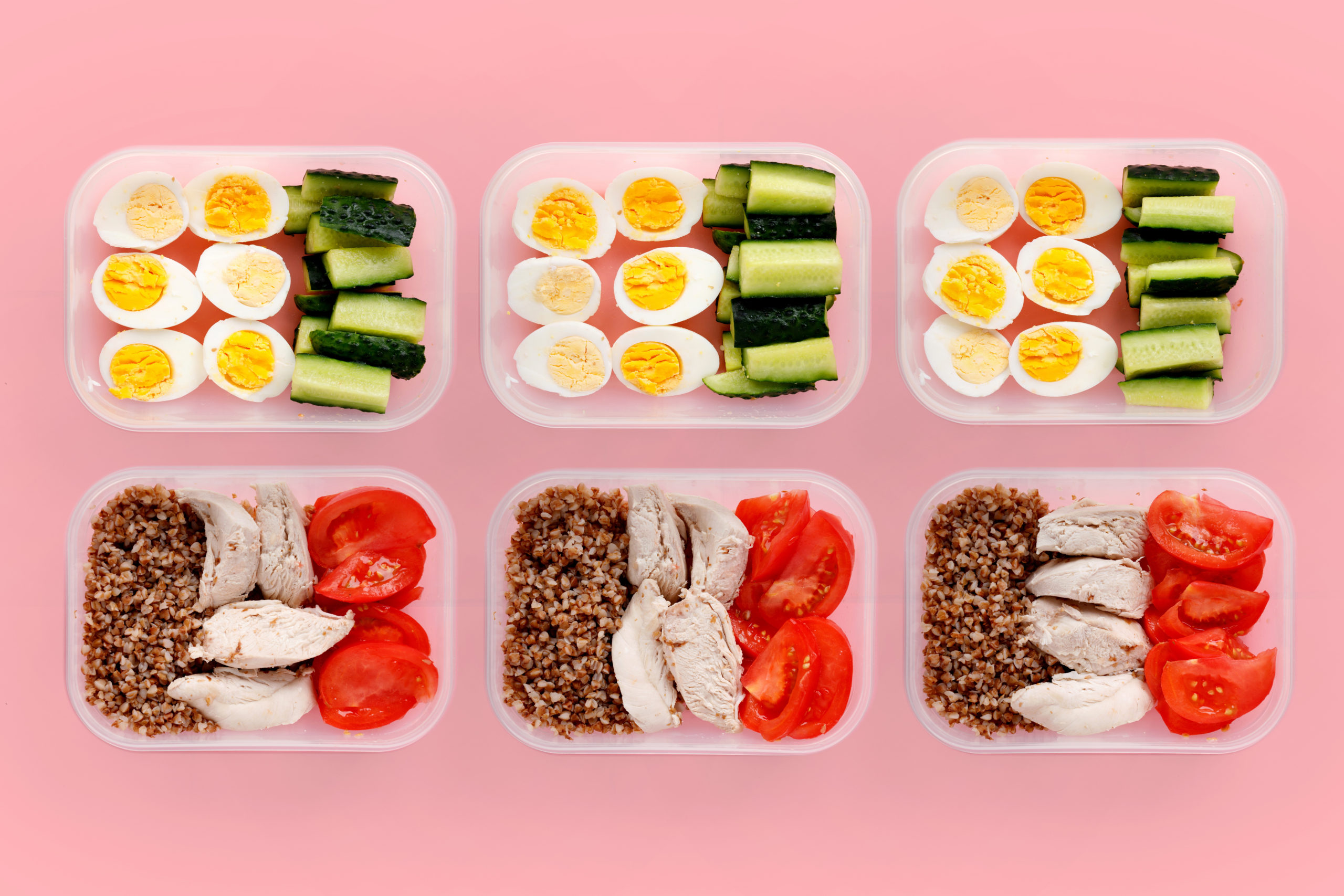Beauty...

By Hilary Sheinbaum
Like us, you too might be eager to set resolutions toward eating healthier, and to start meal planning (if you’re counting calories or simply trying to resist the urge to order unhealthy dishes… but we digress.)
Don’t fret! You don’t need to buy a fancy set of knives, elaborate dishware or an Instant pot (unless you received them as a gift recently, in which case: kudos to you!).
Rather than elaborate tools, there are a handful of tips and other helpful advice that you can put into action, according to Jaimi St. John, VP of Culinary Innovation at Everytable in Los Angeles. Everytable utilizes locally-sourced nutritious foods, made fresh every day, so St. knows how to achieve the best, healthiest prepared meals.
“I use meal prepping as a way to save time, eliminate choices or fatigued decisions, and ensure I’m eating healthy throughout the work week,” says St. John. “With these goals in mind, I always keep my meal prepping simple, clean, and nutritious.”
Come to find, meal prep is a lot simpler than you might think, and it can help introduce you to new foods and cooking techniques, too.
Read on for St. John’s insight and suggestions — you won’t regret it (like the 7 layer cake from Christmas).
“The budget will depend on your dietary choices (high-protein, vegetarian, etc.) and calorie requirements,” she says. “The great thing about meal prepping is that you can eat really high-quality foods, and save money.”
“Most food can last up to seven days in the refrigerator, so prepping your meals once per week can work just fine — this is what I do,” says St. John. “Some items like seafood, or composed salads may not last as long, so if your plan includes those, you may want to eat them earlier in the week or prep your meals twice per week.”
St. John breaks down her go-to ingredients by proteins, carbs and veggies, and fats.
Proteins: “For animal protein eaters, chicken, and pork loin are great for meal prepping,” she says. “You can season them differently, throw them all on a single sheet tray and cook them at the same time. You’ll have a variety of flavors for the whole week, all in under 30 minutes, with only one pan to clean. For plant-based eaters, I do the same thing, but using tempeh and seitan. You can season them separately, and then roast them on a single tray.”
Carbs & Veggies: “Meal prepping is about saving time, and for me, saving dishes. For my carbs and veggies, I’ll usually prepare a combination of roasted starches like sweet potatoes, squash, carrots, and other root veggies. These are nutrient-dense and oh-so-tasty when roasted with a bit of olive oil, salt, and red pepper flakes. I also love to make grain blends using quinoa, brown rice, amaranth, and farro.
I try to mix them up each week to avoid palate fatigue and vary my nutrients,” says St. John.
“For green veggies, I lean into simple salads or when really in a crunch will throw items like broccoli or asparagus on the same sheet tray as the roasted starches and pop them all in the oven together.”
Fats: “My favorite fats to use for meal prepping are nutrient-dense oils: olive oil, coconut oil, avocado oil,” she says. “I season everything differently and use different oils to make sure I’m not getting bored throughout the week with the flavors.”
“Storage is a personal preference,” says St. John. “As I take my meal-prepped items to work each week, I take the time to separate them into individual meals that I can easily throw in my bag each morning. If you work from home, storing in a big container and dishing out per meal is just fine too — and it saves dishes.”
“The best tip is to get organized,” says St. John. “Create your plan on paper ahead of time, grocery shop accordingly, and before you even get into the kitchen, plan the order in which you’re going to cook everything. In professional kitchens, this is how we manage time and work efficiently. For example, I know the chicken will take 30 minutes in the oven, so I’ll get that in first. Then I’ll prepare the veggies. With an organized plan, you can prepare a whole week’s worth of food in an hour.”
…Good thing we just turned on the oven!